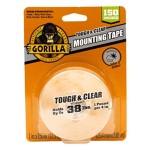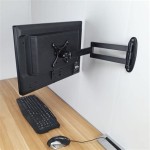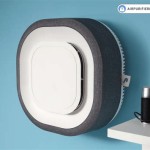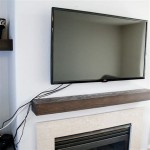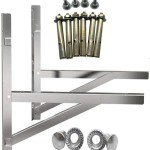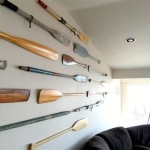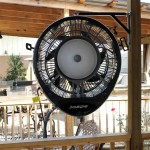Outdoor LED Wall Mounted Lights: Illumination, Security, and Design
Outdoor LED wall mounted lights provide a versatile and efficient solution for illuminating exterior spaces. They combine functional lighting with aesthetic appeal, enhancing security, visibility, and the overall ambiance of a property. Unlike traditional lighting options, LED technology offers significant advantages in terms of energy consumption, lifespan, and design flexibility, making them a popular choice for residential, commercial, and industrial applications.
The selection of appropriate outdoor LED wall mounted lights requires careful consideration of various factors, including the intended application, required light output, desired aesthetic, and environmental conditions. Understanding these factors allows for an informed decision that optimizes performance and longevity while minimizing energy waste.
Key Advantages of Outdoor LED Wall Mounted Lights
LED lighting technology offers several compelling advantages over traditional light sources, particularly for outdoor applications where reliability and efficiency are paramount. These advantages contribute to significant cost savings and improved performance over the lifespan of the fixtures.
Energy Efficiency: LED lights consume significantly less energy than incandescent, halogen, or even compact fluorescent lamps (CFLs) for the same light output. This reduction in energy consumption translates directly into lower electricity bills and a reduced carbon footprint. The efficiency of LED lighting can be attributed to its solid-state lighting technology, which converts a higher percentage of electrical energy into light, minimizing energy loss as heat. This efficiency is typically measured in lumens per watt (lm/W), with LEDs often exceeding 100 lm/W compared to incandescent bulbs which typically achieve around 15 lm/W.
Longevity: LED lights have a considerably longer lifespan than traditional light sources. Incandescent bulbs may last only 1,000 hours, while LEDs can last up to 50,000 hours or more. This extended lifespan significantly reduces the need for frequent bulb replacements, saving on maintenance costs and labor. In outdoor applications, where accessing and replacing lights can be challenging, the longevity of LEDs is particularly beneficial. This extended lifespan is due to the solid-state nature of LEDs, which are much more resistant to shock and vibration than fragile filaments or gas-filled tubes.
Durability: Outdoor environments can be harsh, exposing lights to rain, snow, extreme temperatures, and physical impacts. LED lights are inherently more durable than traditional lighting options due to their solid-state construction. They are resistant to vibrations, impacts, and thermal shock. Many outdoor LED fixtures are specifically designed with robust housings and weather-resistant seals to withstand the elements and ensure reliable operation in demanding conditions. This makes them a more reliable choice than traditional lighting options that are more susceptible to damage from the elements.
Design Flexibility: LED technology offers a high degree of design flexibility. LEDs are small and compact, allowing for innovative and aesthetically pleasing fixture designs. They can be easily integrated into a wide range of housing styles, from traditional to modern, and are available in various colors and color temperatures. This flexibility allows for creating customized lighting solutions that complement the architectural features of a building and enhance the overall aesthetic appeal of the outdoor space.
Instant On/Off: Unlike some fluorescent lights, LEDs turn on instantly without any warm-up time. This instant-on capability is particularly useful for security lighting, where immediate illumination is crucial in deterring potential intruders. The ability to instantly switch on and off also makes LEDs ideal for use with motion sensors and other control systems, further enhancing energy efficiency.
Factors to Consider When Selecting Outdoor LED Wall Mounted Lights
Choosing the right outdoor LED wall mounted lights involves evaluating several key factors to ensure optimal performance, energy efficiency, and aesthetic appeal. Consideration of these factors will lead to a well-informed decision and a lighting solution that meets specific needs and requirements.
Light Output (Lumens): The amount of light emitted by a light fixture is measured in lumens. Determine the required light output based on the size of the area being illuminated and the desired level of brightness. For general pathway lighting, lower lumen outputs may suffice, while larger areas requiring greater security may necessitate higher lumen outputs. Consider the spacing of the lights and their mounting height when calculating the total lumen requirement. Overlighting can be as detrimental as underlighting, creating glare and wasting energy. A lighting plan that precisely addresses the illumination needs of different areas is essential.
Color Temperature (Kelvin): Color temperature is measured in Kelvin (K) and describes the warmth or coolness of the light. Lower Kelvin values (e.g., 2700K - 3000K) produce a warm, yellowish light that is often preferred for creating a cozy and inviting atmosphere. Higher Kelvin values (e.g., 4000K - 5000K) produce a cool, bluish-white light that is often used for security lighting or in areas where visibility is paramount. Select a color temperature that complements the architectural style of the building and the surrounding landscape.
Weather Resistance (IP Rating): Outdoor lights are exposed to various weather conditions, including rain, snow, and dust. The Ingress Protection (IP) rating indicates the level of protection offered by the fixture against these elements. An IP rating consists of two digits; the first digit indicates protection against solid objects (e.g., dust), and the second digit indicates protection against liquids (e.g., water). For outdoor applications, an IP rating of IP65 or higher is generally recommended to ensure reliable operation in wet and dusty environments. An IP65 rating indicates that the fixture is protected against dust and water projected from a nozzle. Higher IP ratings, such as IP67 or IP68, offer even greater protection against immersion in water.
Style and Design: Outdoor LED wall mounted lights are available in a wide range of styles and designs to complement different architectural styles and landscape designs. Choose a style that aligns with the overall aesthetic of the property. Consider factors such as the shape, finish, and materials of the fixture. Modern designs often feature clean lines and minimalist aesthetics, while traditional designs may incorporate ornate details and classic finishes. The fixture should not only provide functional lighting but also enhance the visual appeal of the exterior space.
Control Options: Consider incorporating control options such as motion sensors, timers, and photocells to enhance energy efficiency and security. Motion sensors automatically turn on the lights when movement is detected, providing immediate illumination for security purposes. Timers allow for scheduling the lights to turn on and off at specific times, while photocells automatically adjust the light output based on the ambient light levels. These control options can significantly reduce energy consumption and extend the lifespan of the LED lights.
Mounting Height and Location: The mounting height and location of the lights will affect the distribution of light and the overall effectiveness of the lighting system. Higher mounting heights generally provide broader coverage, while lower mounting heights provide more focused illumination. Consider the specific needs of the area being illuminated when determining the optimal mounting height and location. Ensure that the lights are positioned to avoid glare and to minimize light trespass onto neighboring properties. Properly positioned lights can enhance security, improve visibility, and create a more welcoming outdoor environment.
Types of Outdoor LED Wall Mounted Lights
The market offers a diverse range of outdoor LED wall mounted lights, each designed for specific applications and aesthetic preferences. Understanding the different types of lights can assist in selecting the most suitable option for a particular property and lighting needs.
Security Lights: These lights are designed to provide bright, focused illumination for security purposes. They often feature motion sensors and high lumen outputs. Security lights are typically mounted near entrances, walkways, and other vulnerable areas to deter intruders and enhance safety. The use of directional lighting can help to focus the light exactly where it is needed, maximizing its effectiveness in deterring unwanted activity.
Pathway Lights: Pathway lights are designed to illuminate walkways and pathways, providing safe and convenient navigation. They typically feature lower lumen outputs and are spaced evenly along the path. Pathway lights can be mounted at a low level to provide subtle illumination or at a higher level to provide broader coverage. The choice of fixture design can contribute to the overall aesthetic appeal of the pathway, adding to the beauty of the landscape.
Porch Lights: Porch lights are mounted near entrances to provide welcoming illumination and enhance curb appeal. They are available in a wide range of styles and designs to complement different architectural styles. Porch lights can be controlled by a switch, timer, or photocell to provide automatic operation. The selection of a porch light should consider the size of the porch, the architectural style of the house, and the desired level of illumination.
Flood Lights: Flood lights are designed to provide broad, uniform illumination over a large area. They are often used to illuminate driveways, parking lots, and building facades. Flood lights typically feature high lumen outputs and adjustable tilting angles. The use of LED flood lights can significantly reduce energy consumption compared to traditional halogen flood lights. Careful aiming of flood lights is essential to avoid glare and light trespass.
Decorative Lights: Decorative lights are designed to enhance the aesthetic appeal of the outdoor space. They are available in a wide range of styles and designs, from traditional lanterns to modern sconces. Decorative lights can be used to highlight architectural features, illuminate garden areas, or create a festive atmosphere. The selection of decorative lights should consider the overall design theme of the property and the desired level of ambiance.
Proper installation of outdoor LED wall mounted lights is critical to ensure safe and reliable operation. It is recommended to consult with a qualified electrician to ensure that the installation complies with all applicable electrical codes and regulations. Regular maintenance, such as cleaning the fixtures and checking for any signs of damage, will help to extend the lifespan of the lights and maintain their optimal performance. With careful selection and proper installation, outdoor LED wall mounted lights can provide years of reliable and energy-efficient illumination, enhancing the security, safety, and aesthetic appeal of any property.

Customized Modern Wall Lamps Waterproof Ip65 Up And Down Beam Light Aluminum Led Outdoor Mounted China Lamp Rgb Made In Com

Led Outdoor Wall Lighting

Contemporary Outdoor Led Wall Light Modern Matte Black Aluminum Lighting For Indoors And Outdoors Elvi Home

Ip65 Waterproof Wall Mounting Outdoor Led Lamp Modern Landscape Lights China Rgb Light Made In Com

Wall Pack Led Lights Outdoor Semi Cut Off 90w Lightide

Natural Copper 2 1 4 W Light Led Wall Mounted Spot 69w48 Lamps Plus Lights Lighting Mount

Outdoor Led Wall Lights Mounted Modern Light Manufacturer

Outdoor Led Wall Lights Mounted Modern Light Manufacturer

Outdoor Wireless Up And Down Solar Wall Mounted Washer Light Modern Led Landscape Garden For Project China Lamp Made In Com

Led Outdoor Wall Lighting

